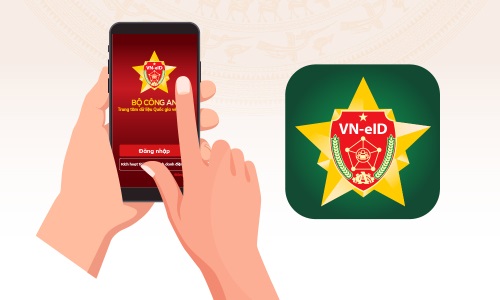During the process of resolving civil lawsuits, the legal rights and interests of the involved parties can still be infringed at any time. So, with the principle of equality in rights and obligations among involved parties, in order to protect the legal rights and interests of involved parties, the laws on civil procedures have provided for the application of preliminary injunctive relief. However, as witnessed in reality, in some cases, the party who is subject of the preliminary injunctive relief is damaged when the Court wrongly applies such measures. Therefore, The Code on Civil Procedures 2015 has provided for the implementation of security measures when taking preliminary injunctive relief.
I. Definition
Preliminary injunctive relief is taken by the Court during the process of resolving civil lawsuits to provisionally resolve the urgent petition of the concerned party, to protect his or her life, health, assets, to collect and protect evidence, to preserve the status quo in order to avoid irrecoverable loss and damage or to secure resolution of the case or legal enforcement. For that reason, preliminary injunctive relief is only taken by the Court when having the request of the involved parties or their legal representatives or individuals, agents, organizations who have the rights to lodge the lawsuit. In some cases, the Court still has the right to decide on its own accord apply certain preliminary injunctive relief without the request of the involved parties when the Court thinks it is necessary.
There are two types of requests for the implementation of preliminary injunctive relief: Requests for the implementation of preliminary injunctive relief with security measures and without security measures. Security measures are measures performed by the party requesting the implementation of preliminary injunctive relief. Unlike security measures to ensure the performance of obligations in civil transactions, security measures when requesting the implementation of preliminary injunctive relief are taken for the purpose of compensating for potential losses or damages suffered by the party against whom preliminary injunctive relief are taken when those measures are wrongly applied and preventing any abuse of the right to petition for the application of preliminary injunctive relief by the applicant.
II. Statutory provisions about the execution of security measures when requesting the implementation of preliminary injunctive relief
1. Cases requiring the application of security measures
The one who requests the Court to implement preliminary injunctive relief has to take security measures when requesting the implementation of the following preliminary injunctive relief:
- Attaching properties in dispute;
- Prohibiting any transfer of property rights with respect to the property in dispute;
- Prohibiting any change in the status quo of the property in dispute;
- Freezing accounts at banks, other credit institutions and the State Treasury; freezing property at places of bailment;
- Freezing properties of an obligor;
- Temporarily suspending tender closing and tendering-related activities;
- Arresting an aircraft or a seagoing ship to secure resolution of the case.
The laws require the implementation of security measures when petition for the application of the above preliminary injunctive relief because the wrongful application of these measures will do damage to the properties and the material, economic benefits of the person who is subject of the preliminary injunctive relief. Therefore, the party requesting the implementation of the above preliminary injunctive relief has to take security measures by depositing a sum of money, precious metals, gemstones or valuable papers into a blocked account or submitting a letter of guarantee which is made with assets of a bank or other credit institution or other entities which must be equivalent to the potential damage.
2. Procedures for implementing security measures
With regards to preliminary injunctive relief requiring security measures, the Court can only decide on applying such preliminary injunctive relief after the requesting party has already completed taking the security measures.
The Court will forecast and roughly estimate of the extent of the potential damage based on each preliminary injunctive relief being applied and each circumstance to determine the sum of money, precious metals, gemstones or valuable papers the requesting party has to submit. The estimated extent of the potential damage must not be lower than 20% of the estimated value of the property which is the subject of the preliminary injunctive relief, unless there is evidence proving the potential damage is lower than 20% of the estimated value of the property which is the subject of the preliminary injunctive relief.
At the request of the Court, the applicant forecasts and roughly estimates the potential damage and sends the estimations to the Court in writing, if the estimations is made during a trial, they do not need to be in writing but they have to be recorded in the minute of the Court. The Court can also ask the party who is subject of the preliminary injunctive relief to roughly estimate the potential damage.
After the receipt of the forecast and rough estimations of the potential damage, The Court will consider and, based on statutory provisions, determine the value of security measures and issue decisions obliging the party requesting the implementation of preliminary injunctive relief to take security measures. These decisions will take effect immediately.
The party requesting the implementation of preliminary injunctive relief shall take security measures within 02 working days, since the issuance of the Court’s decision forcing the application of security measures if the request for the implementation preliminary injunctive relief is presented between the acceptance of cases and the opening of a trial. The time-limit for the execution of security measures can be prolonged if there are good and sufficient reasons, but in all cases, such execution has to be completed before the opening of the Court trial. If the request for the implementation of preliminary injunctive relief is presented in a Court trial, the Court will consider and deliberate at the courtroom, then issue a decision forcing the execution of security measures when such preliminary injunctive relief require security measures. The Court will decide on suspending the trial in 02 working days if the party who is obliged to execute security measures needs time to execute or cannot be present at the trial. If relevant agents, organizations or individuals request the implementation of preliminary injunctive relief simultaneously with the submission of applications to initiate the lawsuits, they will have 48 hours to execute the security measures since such submission and the Court’s acceptance of such submission.
The Court will issue decisions on the application of preliminary injunctive relief after receiving the evidence proving the party requesting the implementation of preliminary injunctive relief has already executed the security measures, including: guarantee invoices of banks, other credit institutions, organizations, individuals or dossiers about the submission of money, precious metals, gemstones or valuable papers into blocked accounts. After resolving the lawsuit and determining the implementation of preliminary injunctive relief is correct and do not make damages, the Court will decide on allowing the disbursement of the blocked account to let the party requesting the implementation of preliminary injunctive relief receive the deposit back.
III. Difficulties and recommendations for perfecting the statutory provisions about the execution of security measures when requesting the application of preliminary injunctive relief
Although the Code on Civil Procedures and the Resolution 02/2020/NQ-HDTP has provided detailed and specific provisions, in reality, the Judges and trial panels still face difficulties in the process of resolving requests for preliminary injunctive relief requiring security measures. As prescribed by the laws, the value of properties used in security measures must not be lower than 20% of the estimated value of properties which are subject of preliminary injunctive relief, however, there are no legal basis for the party requesting the application of preliminary injunctive relief to determine the value of properties used in security measures. Although the Directive 03/2019/CT-TA on the improvement of the quality of the application of provisions about preliminary injunctive relief in civil procedures dated 30/12/2019 has crystallized common mistakes of Courts in the process of forcing the execution of security measures when requesting the application of preliminary injunctive relief, it has not pointed out the method of determining the value of the aforementioned properties.
Therefore, the Supreme People’s Court has to issue guidance on the method of determining the value of properties used in security measures for the party requesting the application of preliminary injunctive relief, including detailed ratios of the value of properties which are subject of preliminary injunctive relief or determining the fixed amount of money if the value of properties which are subject of preliminary injunctive relief cannot be determined. In that case, the execution of security measures will be easier for the party requesting the application of preliminary injunctive relief and the Court will be able to shorten the time for considering the forecasts and rough estimations of the potential damage from the applicant.
If you have any questions or require any additional information, please contact Apolat Legal – An International Law Firm in Viet Nam.
This article is for general information only and is not a substitute for legal advice.





































